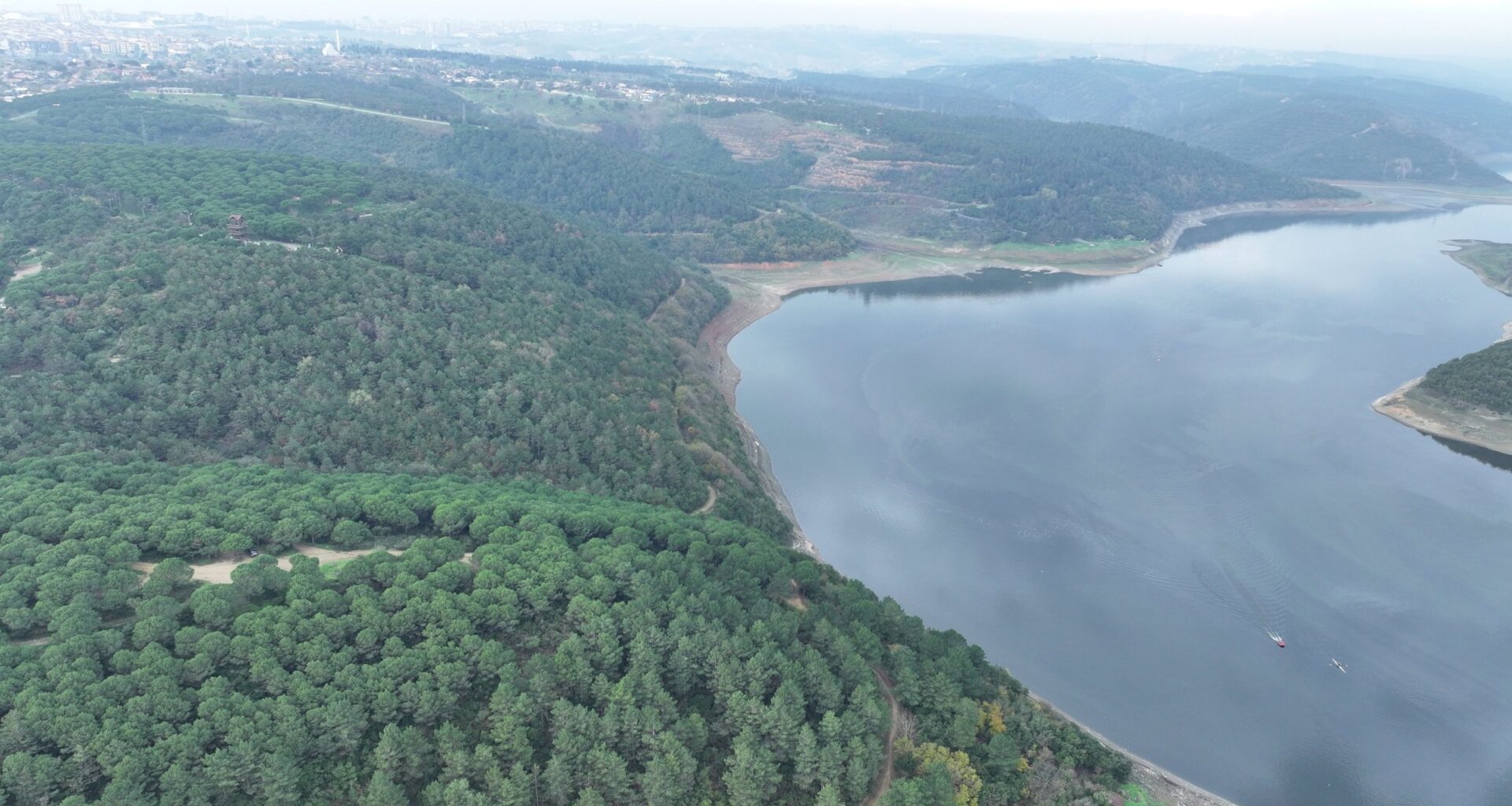The water reservoir fill rate supplying Istanbul has declined to 21.87% as of today, signaling the second-lowest level in the past decade, according to the latest data from the Istanbul Water and Sewerage Administration (ISKI).
After reaching a peak of 81.23% on April 30, reservoir levels have steadily decreased over the last seven months due to elevated water consumption and persistent hot weather.
Detailed assessments reveal varied reservoir levels across the metropolitan area, Ömerli at 17.58%, Darlık 32.13%, Elmalı 51.46%, Terkos 24.79%, Alibey 11.92%, Büyükçekmece 24.73%, Sazlıdere 22.33%, Istrancalar 35.19%, Kazandere 2.61%, and Pabuçdere 4.77%.
Collectively, Istanbul’s reservoirs and ponds hold a water storage capacity of approximately 868.7 million cubic meters, with 189.84 million cubic meters currently available.
Supplementing reservoir supplies, Istanbul has received 381.98 million cubic meters of water from the Melen River and 84.3 million cubic meters from Yeşilçay this year.
On Nov. 8 alone, the city consumed 3.1 million cubic meters of water, sourced from both reservoirs (1.845 million cubic meters) and regulators (1.253 million cubic meters).
A historical review by ISKI shows reservoir fill rates on Nov. 9 fluctuated significantly over the past decade, including 67.79% in 2015, 36.69% in 2016, 56.2% in 2017, and a recent low of 16.77% in 2023, with this year’s rate of 21.87% representing a modest improvement but still reflecting a critical water supply status.
Professor Hüseyin Toros, from Istanbul Technical University’s Department of Climate Science and Meteorological Engineering, highlights that recent rainfall in late October has mitigated the decline in reservoir levels by extending the time for a 1% drop from every three days to approximately five to six days.
“Partial replenishment of surface water and groundwater recharge have contributed to slowing the reduction in reservoir volumes,” he explained.
Looking ahead, Toros anticipates that winter months, December through February, being Istanbul’s rainiest period, will further decelerate reservoir depletion. Cooler temperatures during this period reduce evaporation rates and lower water demand.
Despite these encouraging signs, he cautions that reservoir levels remain precariously low, with this year marking the second-lowest fill rate in the last ten years.
“While 2025’s reservoir levels show some improvement over 2023’s critically low 16% range, the situation remains fragile,” he said. “If reservoirs were at full capacity, the stored water could sustain Istanbul for roughly 10 months; however, the current volume suffices for only about 2 months under present consumption rates.”
Emphasizing strategic water management, Toros advocates for accelerating the adoption of rainwater harvesting and implementing tiered water pricing. Currently, average per capita daily water use in Istanbul is approximately 200 liters. He underscores the importance of policies that encourage reducing consumption to 100 liters per person per day.
“A tiered pricing model, with affordable rates up to 100 liters and increasing tariffs beyond that, incentivizes water-saving behaviors and technological innovation,” Toros said. “This approach benefits citizens economically, supports technology developers, and allows municipalities to meet water demand efficiently with lower investment costs.”

The Daily Sabah Newsletter
Keep up to date with what’s happening in Turkey,
it’s region and the world.
SIGN ME UP
You can unsubscribe at any time. By signing up you are agreeing to our Terms of Use and Privacy Policy.
This site is protected by reCAPTCHA and the Google Privacy Policy and Terms of Service apply.

